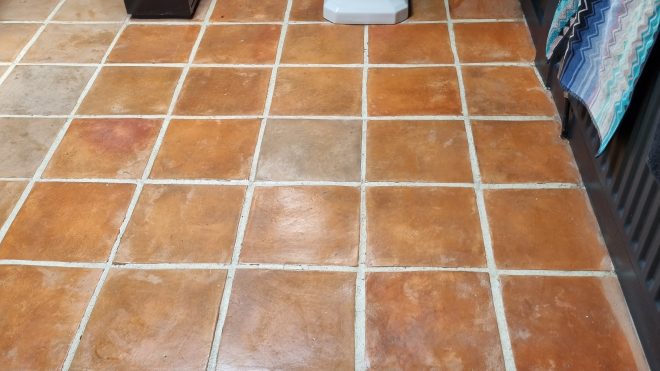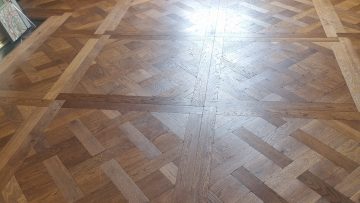Maintaining Natural Stone Floors
With their beauty and class, installations like marble, limestone and travertine floors bring a touch of luxury to any establishment they are set up in. That timeless appeal enhances the decor, and the numerous options available enable you to have the specific look that matches your individual style. They are also durable – but the structural integrity of the installation is tied to how well it is taken care of. Here are some measures that you should observe.
Deal with spills immediately they form
Natural stone surfaces have varying kinds of absorbency depending on the particular type of material – but the threat still abounds. They will absorb water, chemicals and liquids that wind up on them. This will cause staining or discolouration depending on the type of liquid in question. Spills are not something you can put off till the routine floor cleaning. Tend to them as soon as they happen. Work with a damp cloth, such as one of microfibre material, blotting up the spill. Here, start from the edges of the spill then work your way towards the centre. That way the liquids won’t end up being spread all over the floor.
Handy tip: Ensure that your floor has been sealed. These sealers play a critical role of preventing liquids from penetrating into the stone floor, thus reducing the risks of staining and structural damage. This does not mean that you put off the floor cleaning whenever there are spills. The spills should still be dealt with quickly. The frequency of sealing the floors will vary from one establishment to the next. In some cases the resealing is done after three years, in others five years. Definitely, going for stone sealers from quality brands will give you more bang for your buck.
Use mild detergents for the floor cleaning
The best agent here is a pH-neutral product. These will be gentle on the stone, allowing you to remove general dirt without putting the floor at risk. However, the pH neutral products will be less efficient when it comes to getting rid of those stubborn stains and tough dirt spots, compared to acidic or alkaline products. This does not mean that you go for strong cleaners. Here, use mild formulations that have been developed specifically for natural stone floors, and stick to their stipulated dilution ratios. Solutions like vinegar, citrus cleaners or particularly strong acids should be avoided. This is because they will damage the surface, which is not how you want the floor cleaning to pan out. If you have a marble countertop, you may have already received repeated warnings about cutting lemons directly on it. This usually leads to etching, where dull spots form on the installation. A similar case will be seen when you use lemon juice as a cleaning agent on the floor.
Remember that natural stones are not all equal. For instance, a floor cleaning agent that has been developed for granite installations can end up being too harsh for marble. This is because granite is a siliceous stone which can handle more acidic agents compared to marble, which is a calcareous stone.
Some alkalis like ammonia and hydrogen peroxide can be used. This is a common DIY approach for dealing with problems like ink stains and organic stains. However, even these have their limits. For instance, these alkalis will bleach dark marble. With hydrogen peroxide, this is used on installations like light coloured marble floors when getting rid of organic stains and water-based stains like fruit juice or if the little ones went drawing all over the surface with washable marker pens. Note that the hydrogen peroxide is a bleaching agent, and it will discolour drank marble. Cornstarch is another handy household solution that can be used for quick fixes, especially when dealing with spills. This is due to the ability of cornstarch to soak up the liquids that are on the surface. For instance, if there are coffee or oil stains on the floor that have proved difficult to remove, you can cover them with cornstarch and then allow it to work overnight. The starch draws out the fluids from the natural stone, absorbing it so that you can proceed to wash the area. Basically, the safest approach is working with a cleaner formulated to be compatible with the particular type of natural stone. Any new cleaner that you’re uncertain of should first be tested on an inconspicuous area. Also when using solutions like ammonia, you should ensure that the area is well-ventilated, and that the solution has been diluted before use. Generally, you can have half a cup of ammonia being mixed with one gallon of water.
The dirt and grime that winds up on the floor is still one of the main threats to the installation. From the soiling that is tracked in from the outdoors, to the occasional drinks that get spilled, and even cases of urine stains – you need to have appropriate floor cleaning programs in place.
Handy tip: For cases where there are a couple of scuff or scratch marks on the floor, you can use a felt pad to remove them. Simply apply some of the mild detergent and water onto the pad and rub the affected area, following the direction of the grain. Don’t rub in circular motions though, as this can result in the floor getting damaged. This is just a convenience measure for those small cases of scratch marks.
Apply a sealant
The floor should be treated with a sealant once or twice a year. The role of the sealant is to add extra protection to the installation, warding off liquids that would have been quickly soaked up by the absorbent stone. A thorough floor cleaning will be needed before the sealant is applied. In fact, it is recommended that you get a professional cleaner and restore to service the natural stone floor, as they will also remedy the issues that are affecting the installation, and put in place measures to avoid future troubles.



